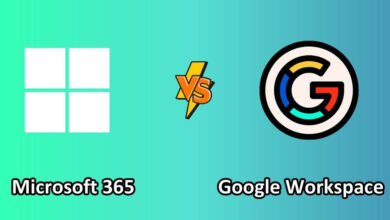Difference Between Insourcing And Outsourcing(With Table)
When it comes to completing an important project, companies sometimes have to decide between two important business practices i.e insourcing and outsourcing. These two are fundamental domains in business and finance study that are often used interchangeably by many students. However, there is an obvious difference between them. So, in this article, we will understand the complete difference between these two terminologies. The content of the blog has been arranged in the following order.
Definition Of Insourcing
Insourcing refers to assigning a specific project to a person, party, or department within the organization instead of hiring a company or a person from an outside source. This method takes place within the firm infrastructure and utilizes all the developed resources within the organization to achieve the goal. For example, if a company already has an IT department within its infrastructure then that company will assign all the IT-related projects to its own department rather than assigning them to an outside party.
Advantages Of Insourcing
Some of the most common advantages of insourcing are as follows.
- It allows the companies to have control over the quality of the task it perform.
- Insourcing helps the employees of the company in developing and enhancing their skills.
- The companies whose data is sensitive will always prefer the insourcing method, as they cannot trust any outside source or a party.
- The cost of insourcing is much lower as compared to that of outsourcing.
Definition Of Outsourcing
Outsourcing is another business practice where a company hires a third party or an outside company to complete a specified task or a project. This means that this method of business uses an outside organization having a developed and well-skilled staff for some sort of services and manufacturing products. Some industries like retail, travel, transport, healthcare, and sometimes government agencies rely on outsourcing in order to complete their specific work or tasks.
The firm which utilizes outsourcing for its internal business activities and efficiency is known as the client firm. On the other hand, the company or organization which delivers the outsourcing services to the client firm is known as the service provider or outsourcing provider. Moreover, in outsourcing, the two companies sign a contract for a pre-determined time. The length of the pre-defined time may sometimes vary, depending on the project.
Advantages Of Outsourcing
Some of the common advantages of outsourcing are as follows.
- Outsourcing help companies save the money involved in the employment of new employees and staff for a specific task.
- It allows a company to focus on the core activities of the firm/business by contracting non-core actions.
- Choosing to outsource can really help your business achieve more efficient services, productivity, and great quality work.
- It helps you increase reach and give access to certain capabilities or facilities.
Difference Between Insourcing And Outsourcing(Table)
| Basis For Difference | Insourcing | Outsourcing |
| Definition | It refers to the allocation of a specific task or a project within the organization instead of hiring an outside source, party, or company. | It refers to the business practice where a company hires another company or an individual for the completion of a specific task or project. |
| Location | To have oversight and control over the project. | To focus on the core functions and cut costs. |
| Confidentiality | With insourcing, sensitive and confidential information will not be at risk. | The company’s information may be at risk. |
| Cost | As the company uses the existing resources, the cost may be lower. | Cost savings are enjoyed due to the economies of scale. |
Key Differences Between Insourcing And Outsourcing
Some of the key differences between insourcing and outsourcing are as follows.
- Insourcing refers to assigning a specific project to a person, party, or department within the organization instead of hiring a company or a person from an outside source. On the other hand, Outsourcing is another business practice where a company hires a third party or an outside company to complete a specified task or a project.
- In insourcing, all the functions and activities are performed separately within the organization, no matter whatever the place or location is. On the other hand, outsourcing activities take place outside the firm i.e outsourcing activities take place in the outside organization to which the project is assigned.
- Insourcing helps a firm in providing insight and control over the activities and working staff. On the other hand, in the case of outsourcing, there is very little control over external or outsourced operations.
- Companies utilize outsourcing to cut the costs such as labor costs, overheads, equipment, and technology. It is considered as the best option when the cost of purchasing goods and services is lower than the cost of manufacturing the items. On the other hand, insourcing is considered the appropriate option when a company wants to monitor the activities itself, rather than entrusting them to the other company.
Conclusion
Insourcing is the best option when companies have some short-term or temporary requirements for business, and there is a need to build a competent and talented working team. On the other hand, outsourcing is the best option when the business wants to reduce expenses, but needs expertise and efficiency in the work.



